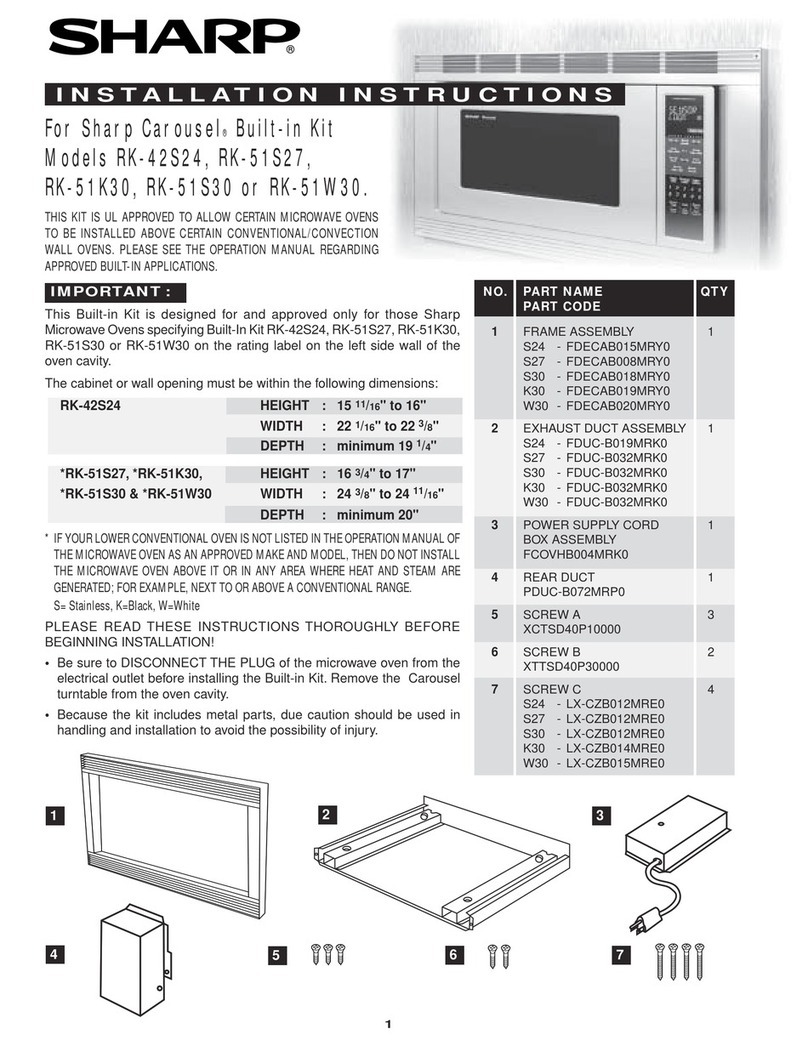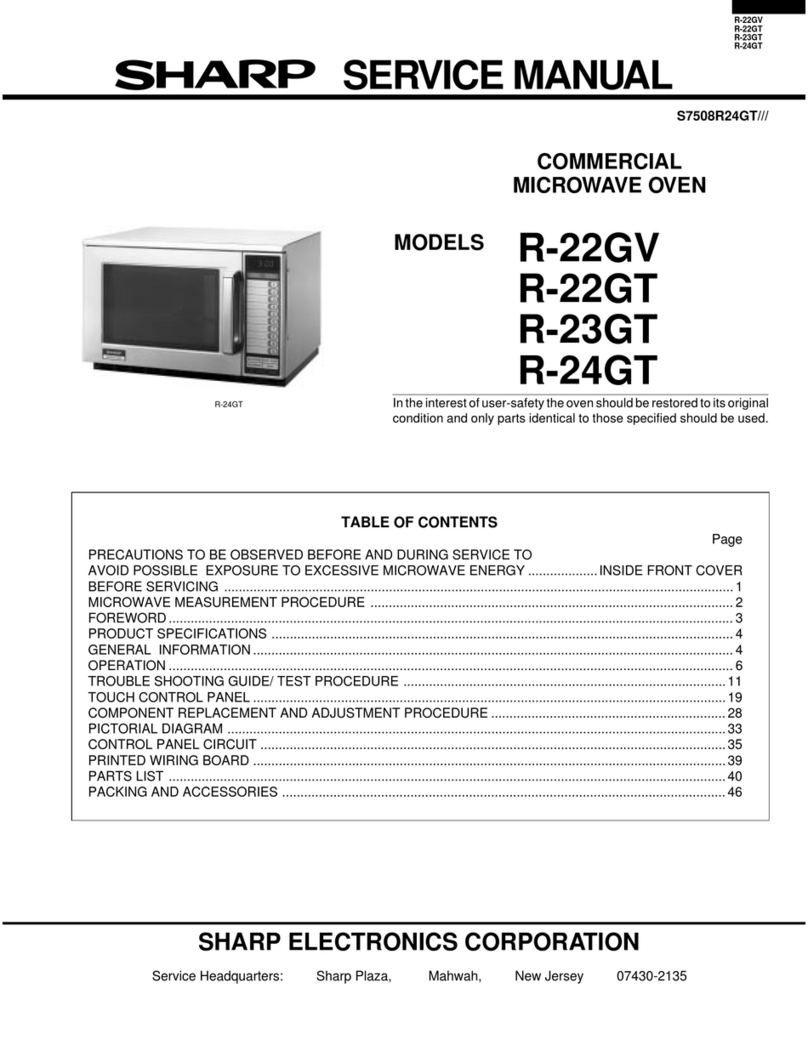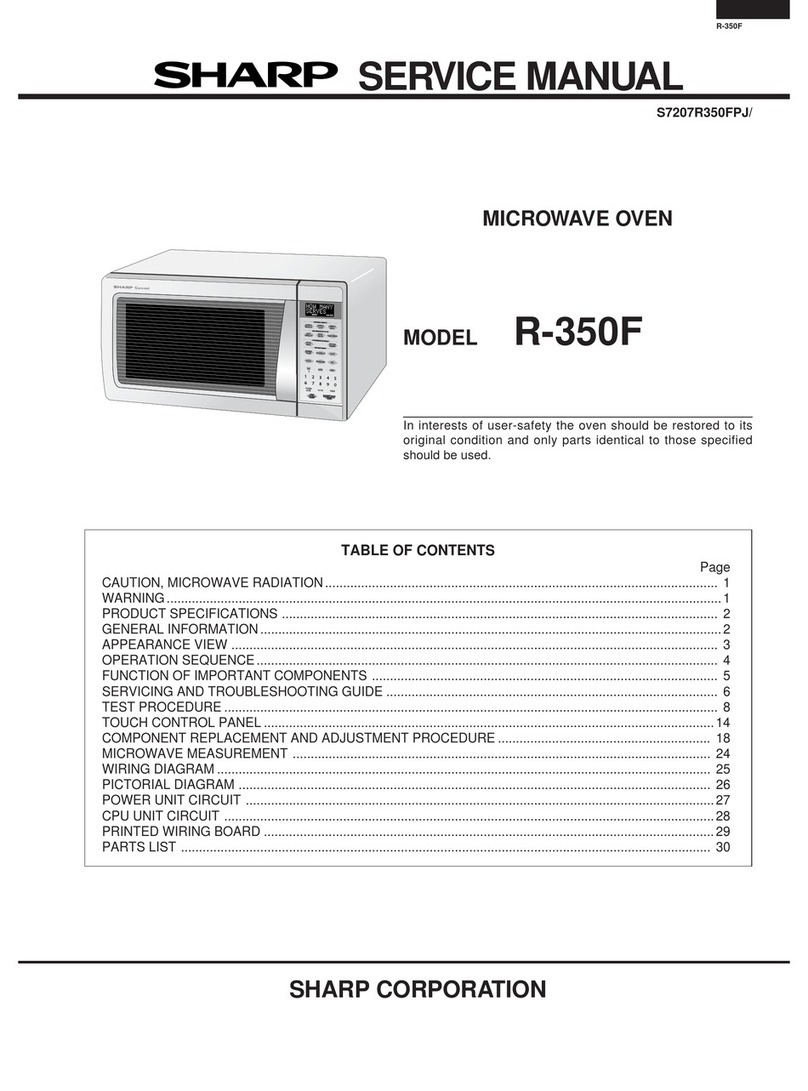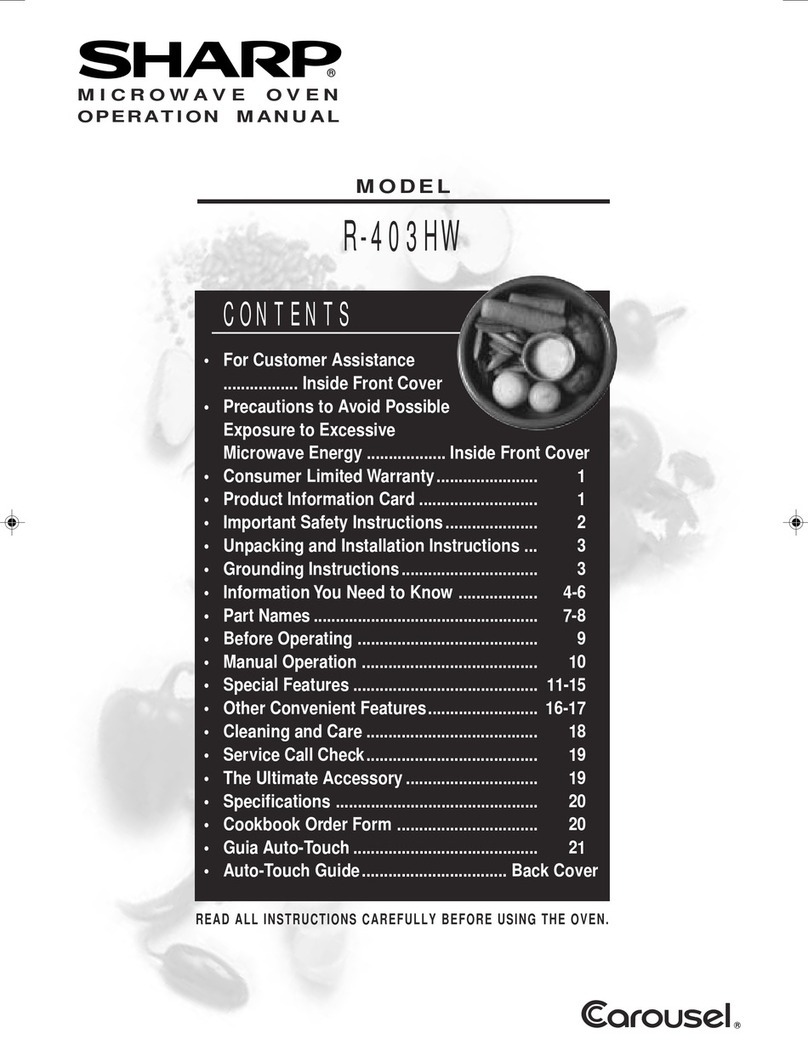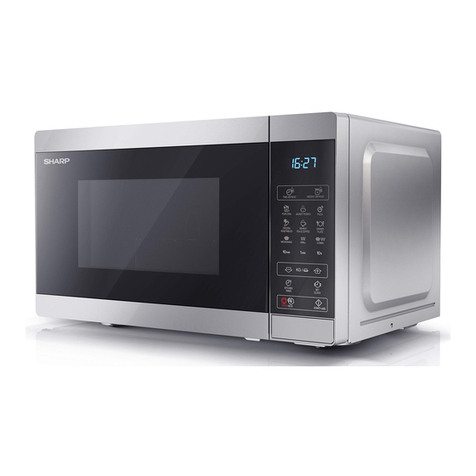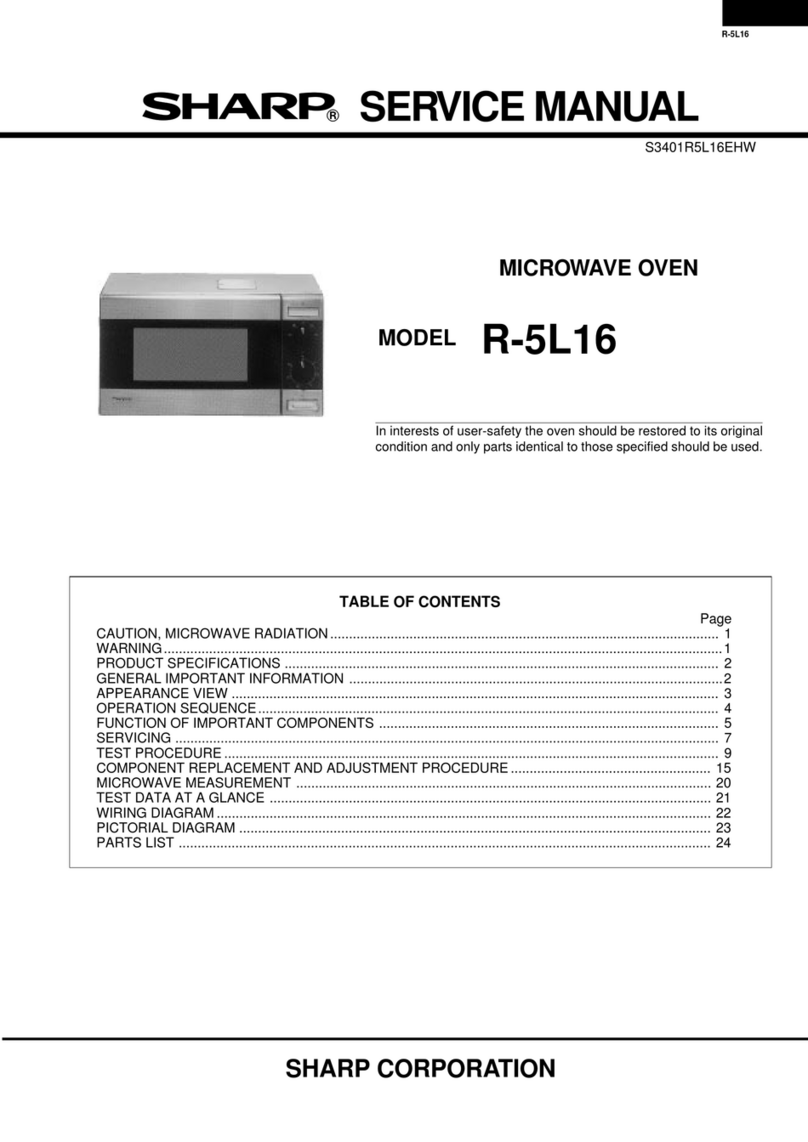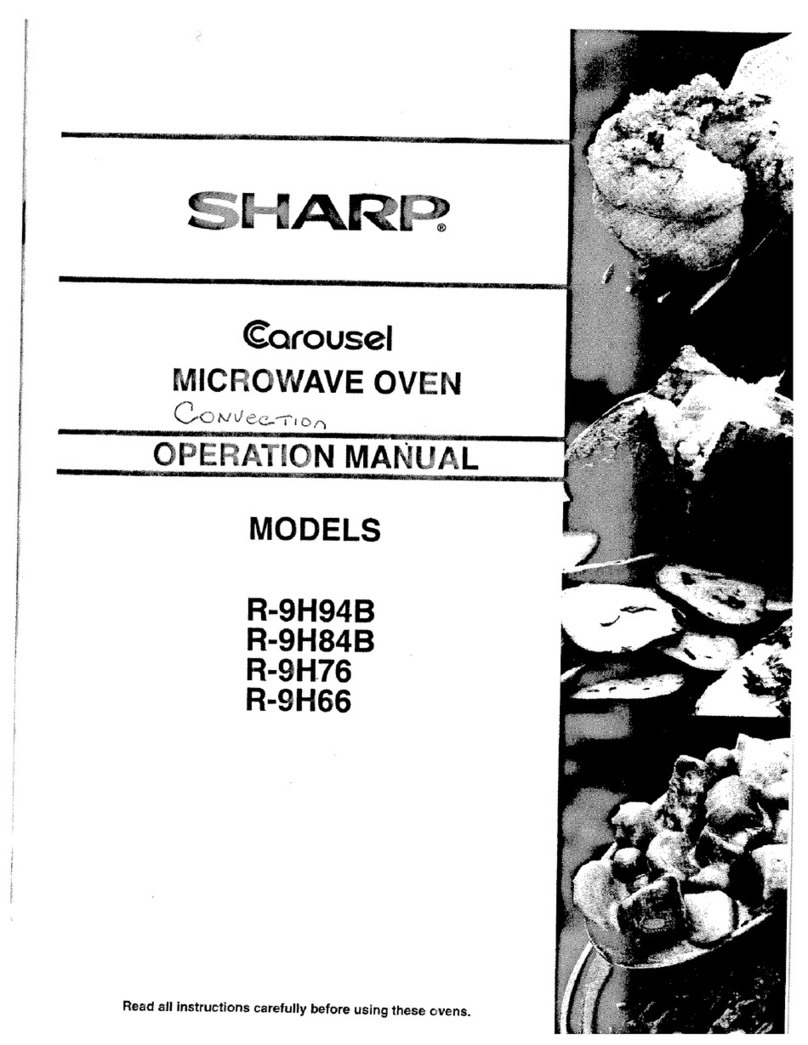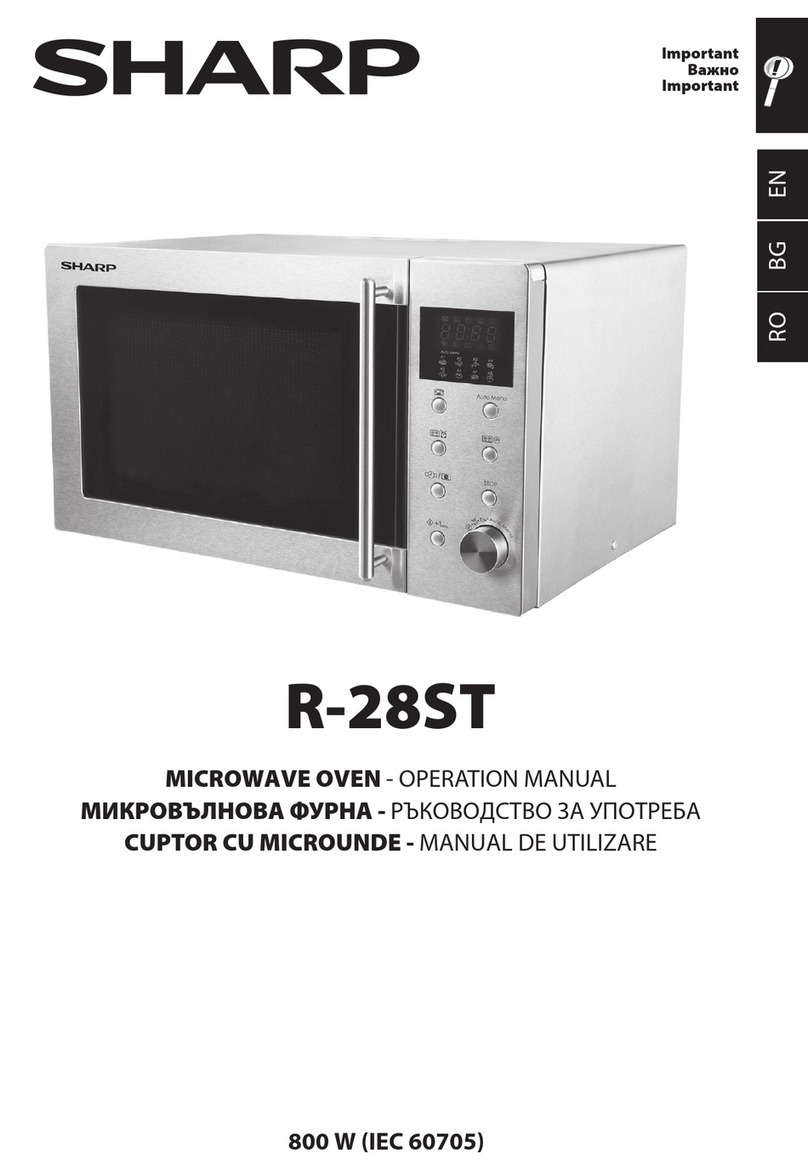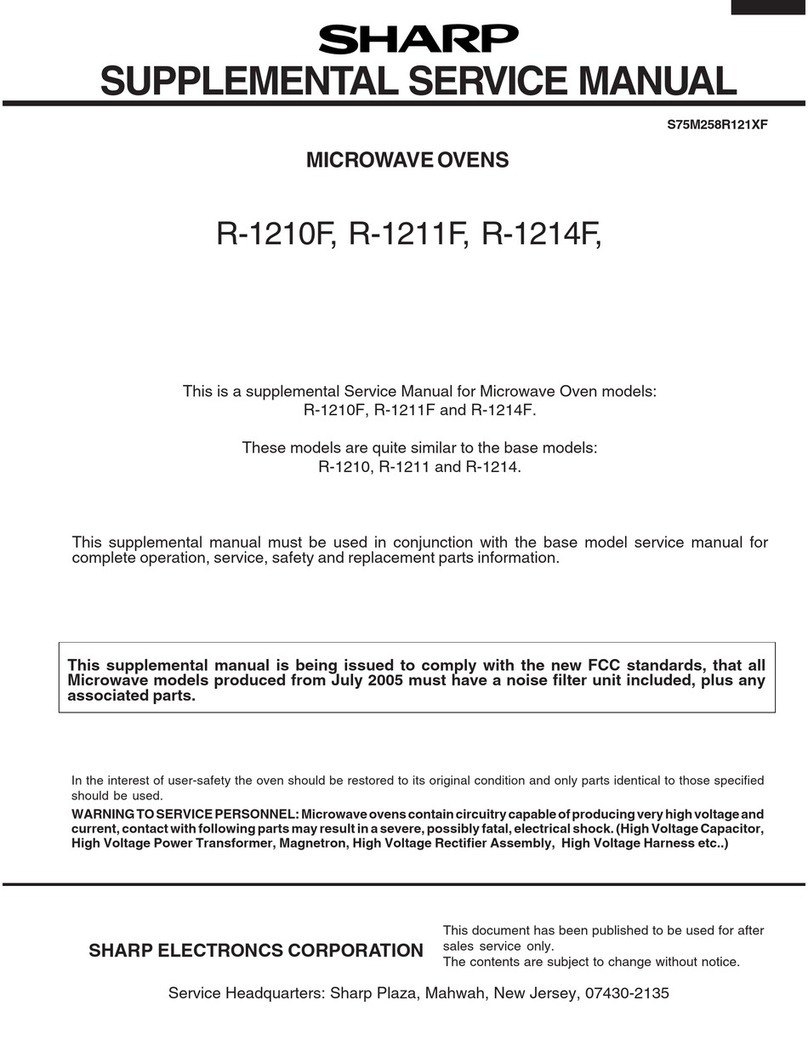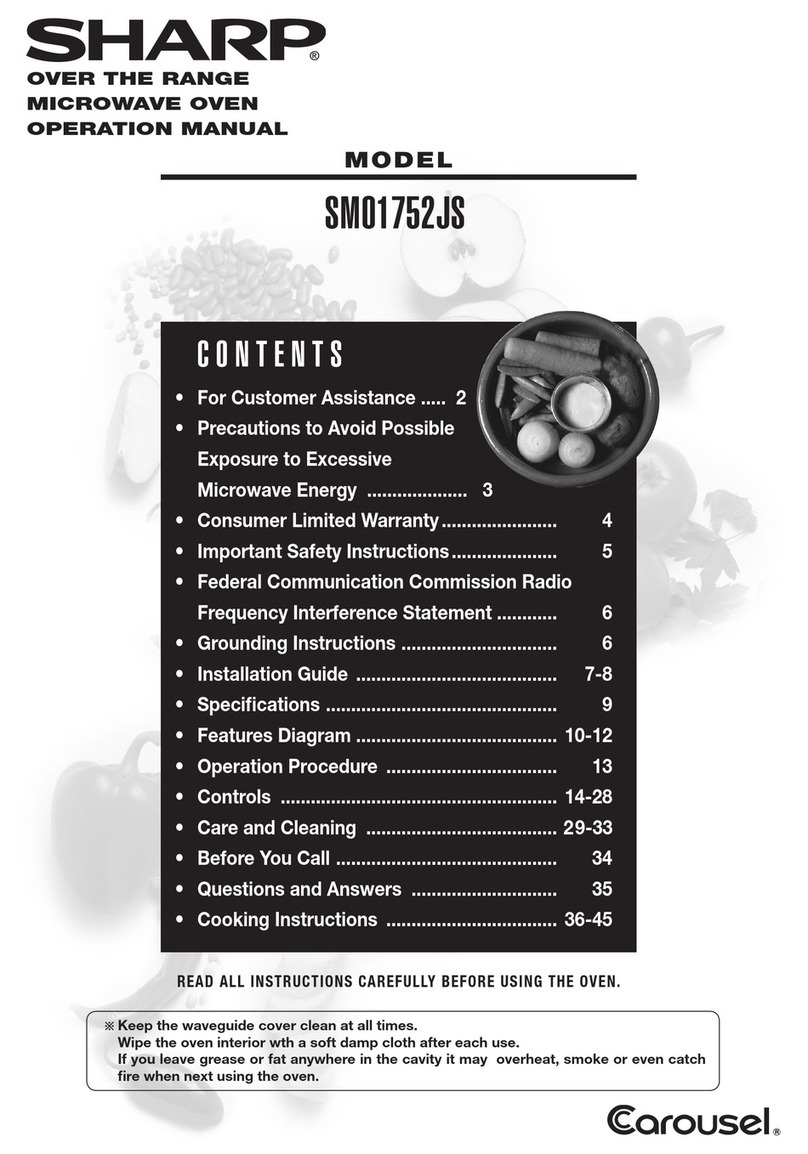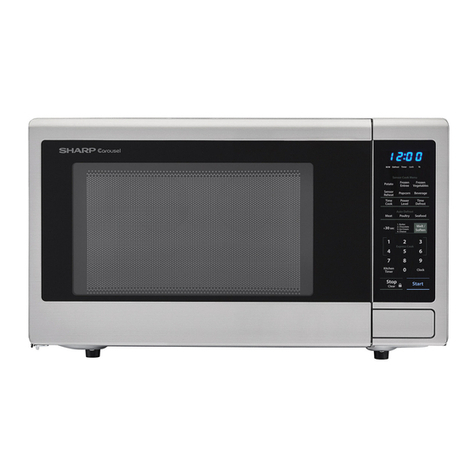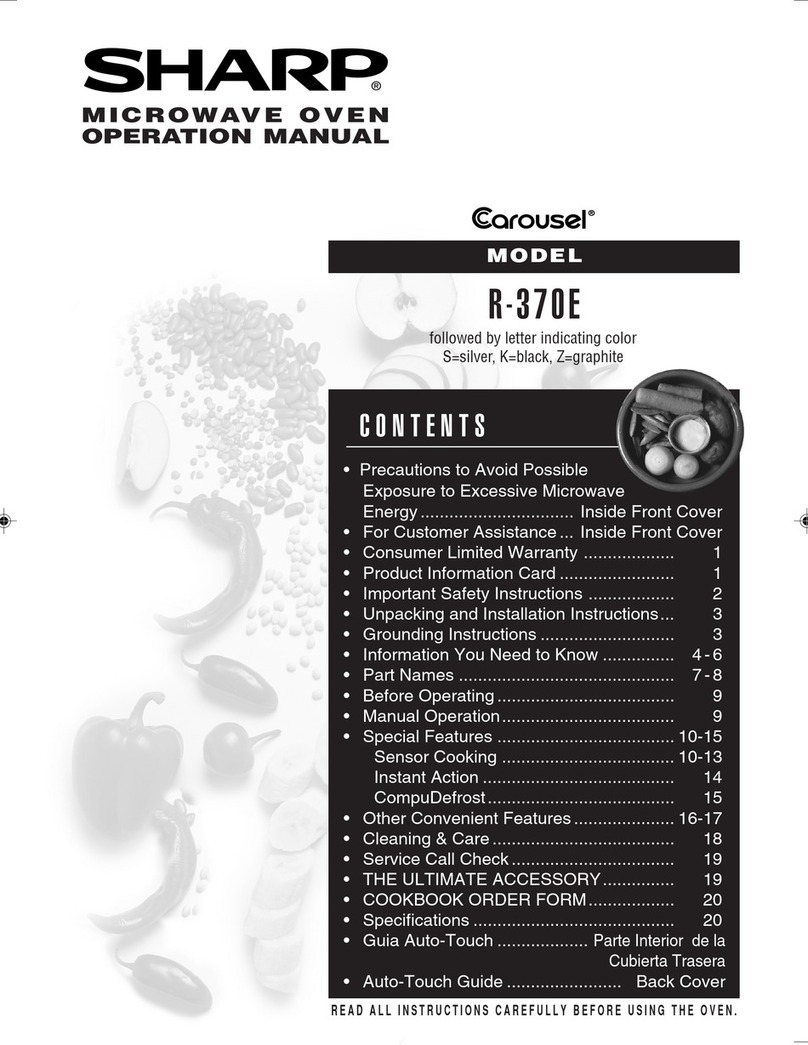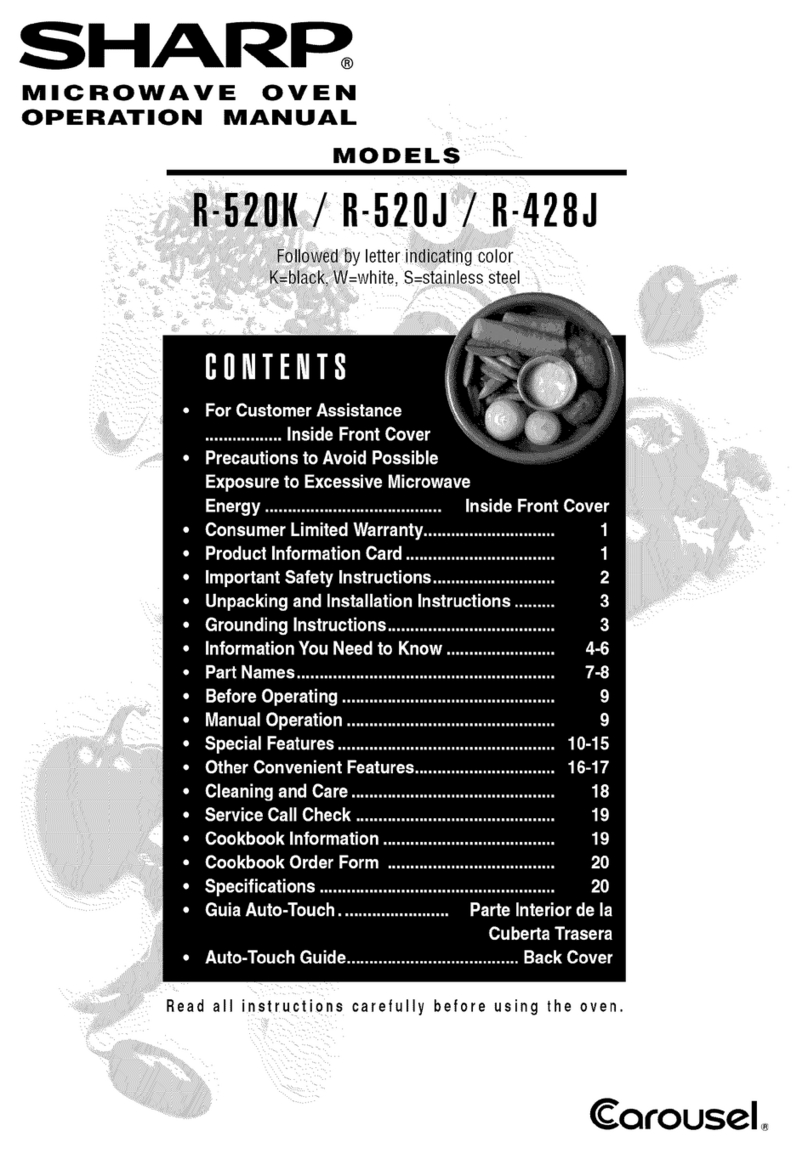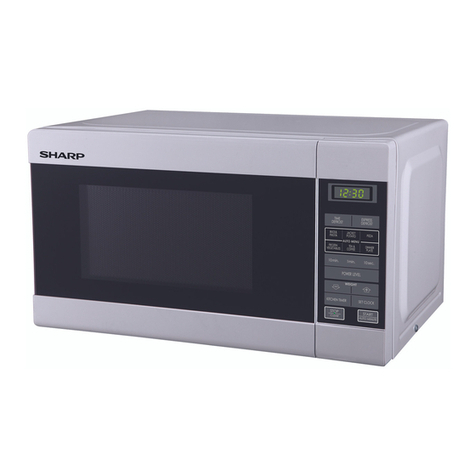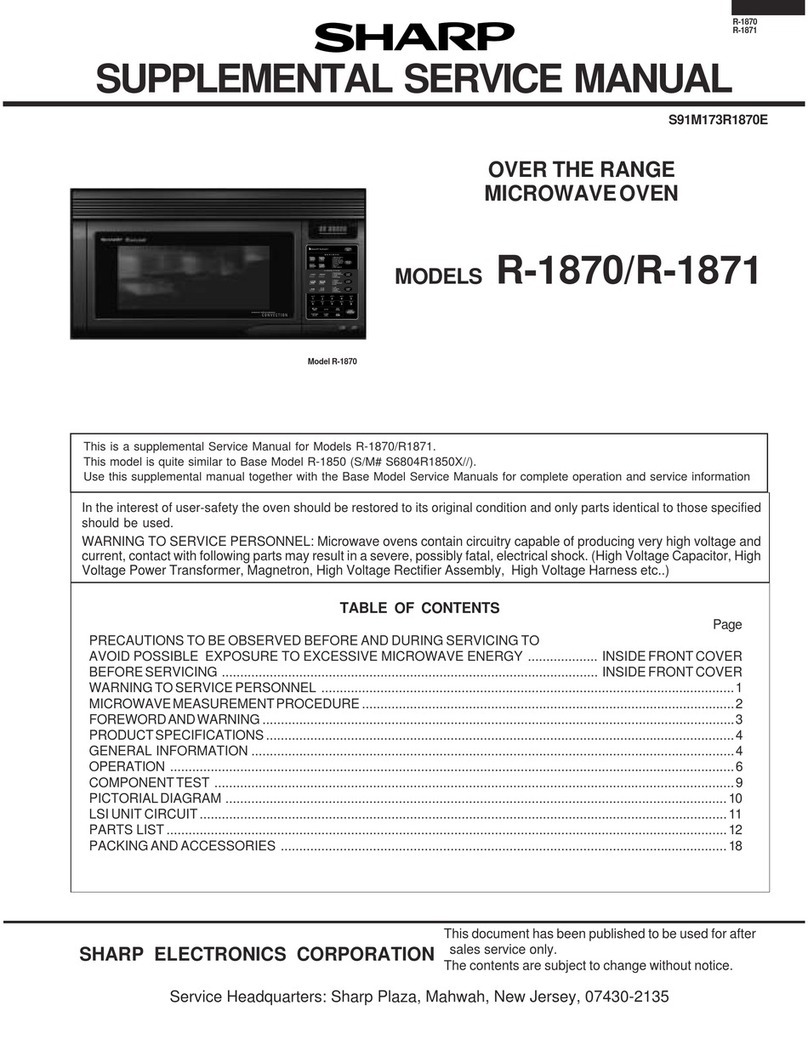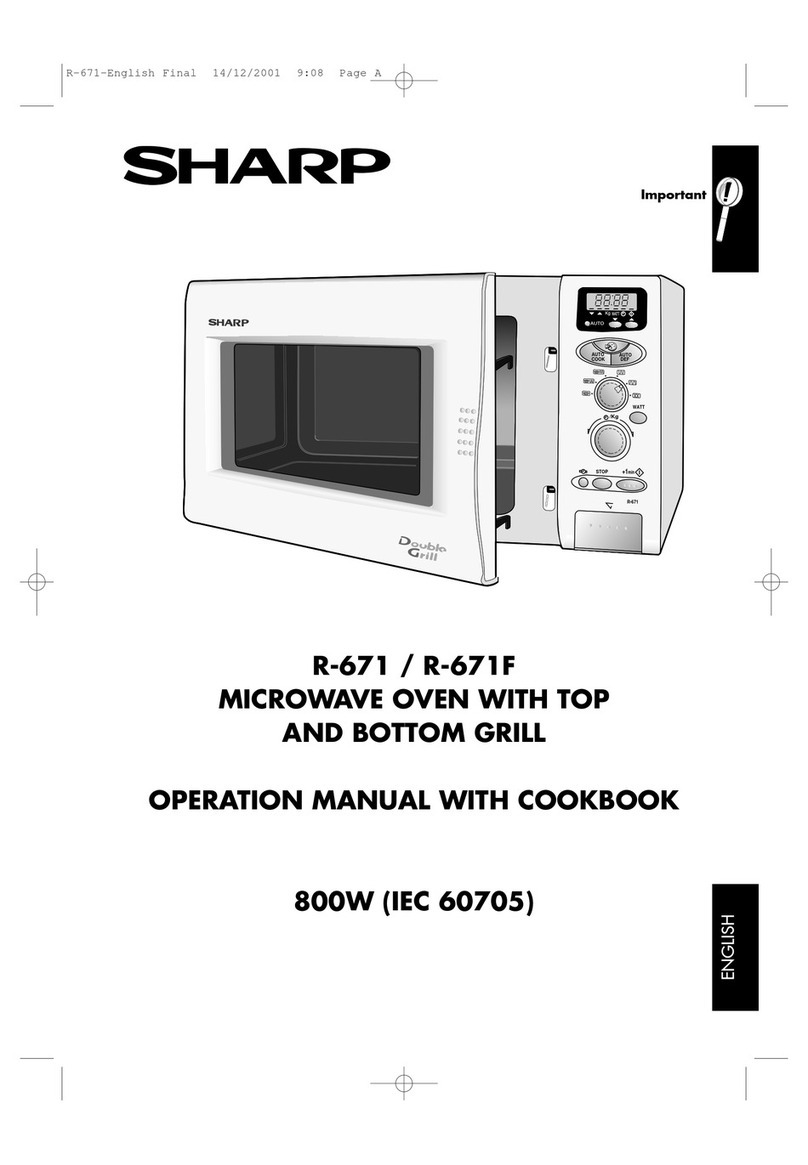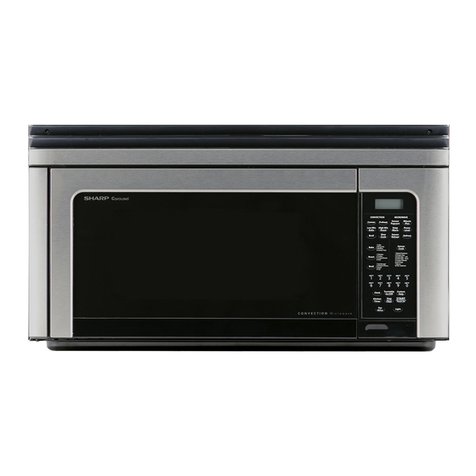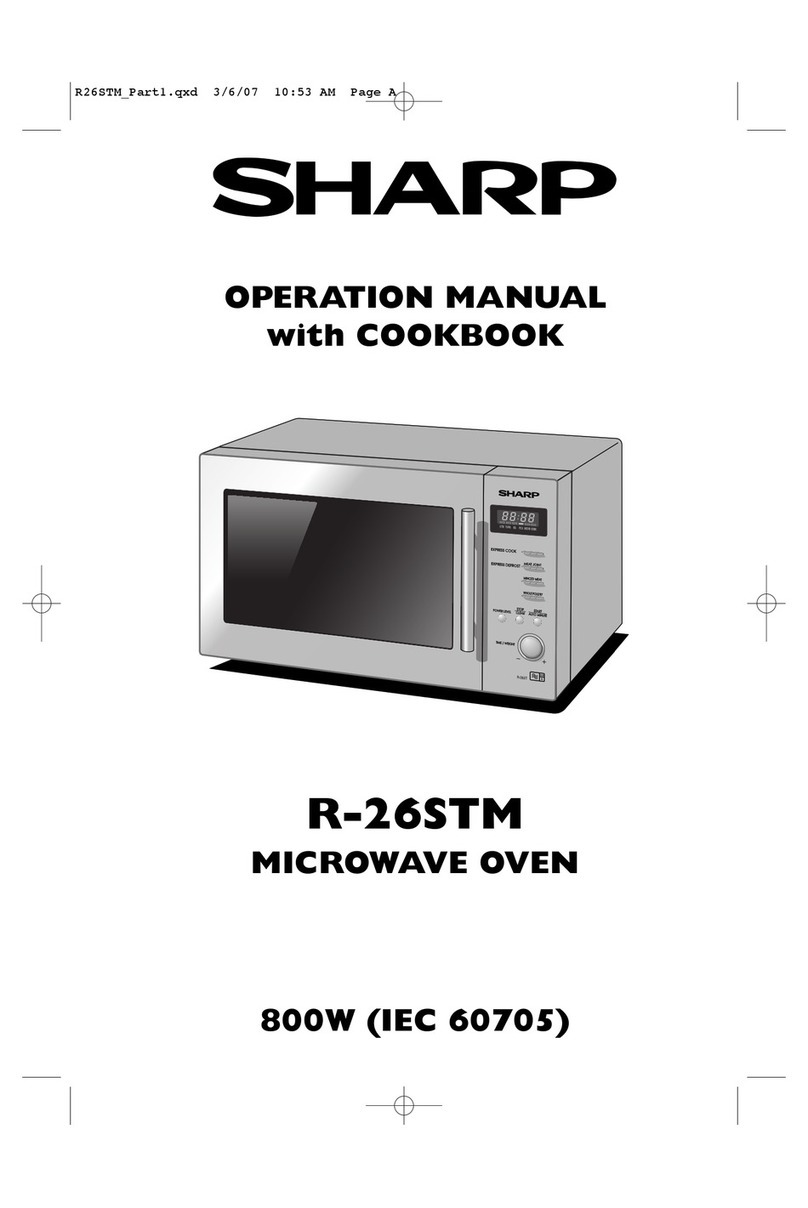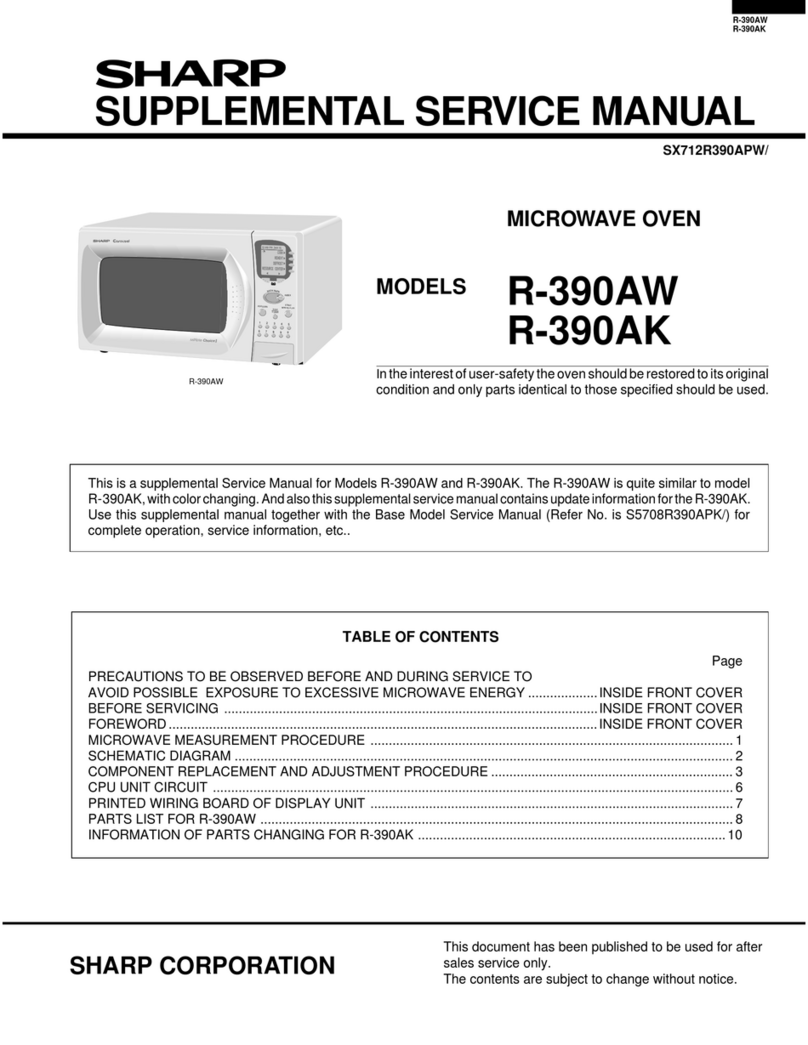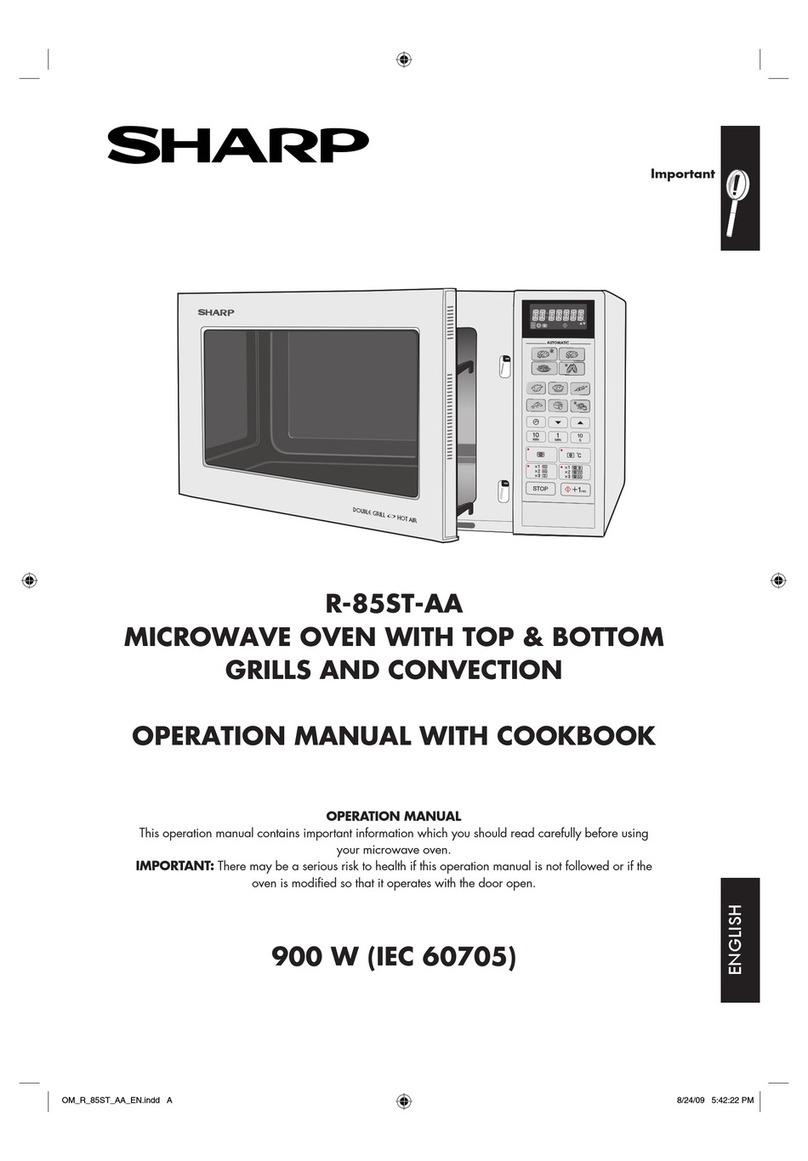
7
R-22AM
R-23AM
R-23AT
OPERATION SEQUENCE
the two high voltage transformers. The voltage is
convertedtoabout3.3voltsA.C.outputonthefilament
winding and high voltage of approximately 2000 volts
A.C. on the secondary winding.
2. The filament winding voltage (3.3 volts) heats the
magnetronfilamentandthehighvoltage(2000volts)is
senttothevoltagedoubling circuit, where it isdoubled
to negative voltage of approximately 4000 volts D.C..
3. The 2450 MHz microwave energy produced in the
magnetron generates a wave length of 12.24 cm. This
energyischannelledthroughthewaveguide(transport
channel)intothe oven cavity,wherethe food isplaced
to be cooked.
4. Whenthecookingtimeisup,asignaltoneisheardand
the relays RY3+RY4 (for R-23AT)/ RY2+RY3 (for R-
22AM/23AM) go back to their home position. The
circuits to the high voltage transformers T1+T2. The
relay RY1 remains and oven lamp, blower motor and
stirrer motors work for 1 minute.
5. When the door is opened during a cook cycle, the
switches come to the following condition.
CONDITION
DURING DOOR OPEN
SWITCH CONTACT COOKING
(NO COOKING)
1st latch switch COM-NO Closed Open
Monitor switch COM-NC Open Closed
2nd latch switch COM-NO Closed Open
Stop switch COM-NO Closed Open
3rd latch switch COM-NO Closed Open
ThecircuitstothehighvoltagetransformersT1+T2are
cutoffwhenthe 1st latch,2ndlatch,3rd latch andstop
switches SW1+SW2+SW3+SW5aremadeopen.The
blower motor BM, stirrer motors and oven lamp re-
mains on even if the oven door is opened after the
cookingcyclehasbeen interrupted, becausetherelay
RY1 stays closed. Shown in the display is the remain-
ingtime,butthe program is cancellediftheoven is not
started within 3 minutes.
6. MONITOR SWITCH CIRCUIT
The monitor switch SW4 is mechanically controlled by
oven door, and monitors the operation of the 1st latch
switch SW1.
6-1. When the oven door is opened during or after the
cycleofacookingprogram,the1st,2nd,3rdlatchand
stopswitchesSW1+SW2+SW3+SW5mustopentheir
contactsfirst.Afterthatthecontacts(COM-NC)ofthe
monitor switch SW4 can be closed.
6-2. When the oven door is closed, the contacts (COM-
NC) of the monitor switchSW4 must be opened first.
Afterthatthecontacts(COM-NO) ofthe1st, 2nd, 3rd
latchandstopswitchesSW1+SW2+SW3+SW5must
be closed.
6-3. Whentheovendoorisopenedandthecontactsofthe
1st latch switch SW1remain closed, remains closed,
the fuse F2 F6.3A will blow, because the monitor
switch is closed and a short circuit is caused.
MICROWAVE VARIABLE COOKING (for R-23AT)
When the microwave oven is preset for variable cooking
power, the line voltage is supplied to the high voltage
Closing the door activates all door interlock switches (1st
latch switch, 2nd latch switch, 3rd latch switch and stop
switch).
IMPORTANT
Whentheovendoorisclosed,themonitorswitchcontacts
COM-NC must be open. When the microwave oven is
plugged in a wall outlet (230 volts, 50Hz), the line voltage
is suppliedto thepoint A5+A7 inthe controlpanel through
the noise filter. Figure O-1 on page 39
1. The digital display shows .
IDLE CONDITION
When the door is opened, the contacts of the 1st. latch
switchSW1,2nd.latchswitchSW2,3rd.latchswitchSW3
and stop switch SW5 open, initiating the following:
Figure O-2 on page 40
1. Asignalisinputtothecontrolunitenergizingthecoilof
shut-off relay RY-1.
2. The shut-off relay RY-1 contacts close completing
circuits to turn on the oven lamp, blower motor and
stirrer motors.
3. If the door remains open, 60 seconds later the control
unit de-energizes shut-off relay RY-1 turning off the
oven lamp, blower motor and stirrer motors.
When the door is closed, the contacts of the 1st. latch
switchSW1,2nd.latchswitchSW2,3rd.latchswitchSW3
and stop switch SW5 close. With the closing of the stop
switch SW5 contacts, an additional circuit is provided
whichwillpermittheoperationoftheovenwhenoneofthe
touch pads is depressed. Since the control is enabled
through the stop switch SW5, the door must be closed
before the touch pads will be effective. When the door is
closed,afull60secondIDLEconditionisalwaysprovided
for selecting and pressing the desired touch pads. A 60
secondIDLEconditionwillalsofollowtheendofeachcook
cycle.
MICROWAVE COOKING CONDITION
for R-23AT
Touch MANUAL/ REPEAT key and enter a desired
cookingtimewiththetouchingNUMBERkey.Andthen
touch START key.
Function sequence Figure O-3 on page 40
CONNECTED COMPONENTS RELAY
Oven lamp/ Blower motor/ Stirrer motors RY1
High voltage transformer T1 RY3
High voltage transformer T2 RY4
for R-22AM/23AM
Enter a desired cooking time with the turning ELEC-
TRONIC TIMER knob. And then push STARTbutton.
Function sequence Figure O-3 on page 40
CONNECTED COMPONENTS RELAY
Oven lamp/ Blower motor/ Stirrer motors RY1
High voltage transformer T1 RY2
High voltage transformer T2 RY3
1. The line voltage is supplied to the primary winding of
